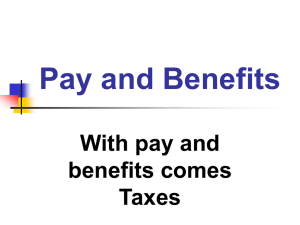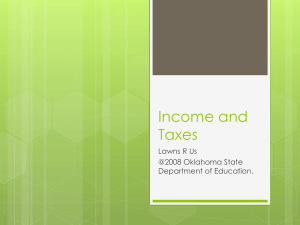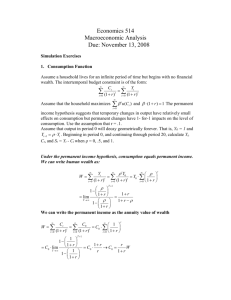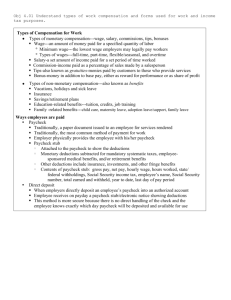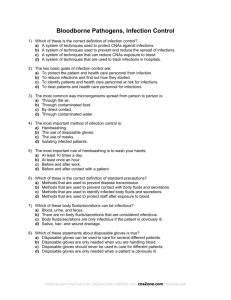Disposable income - Federal Reserve Bank of St. Louis
advertisement
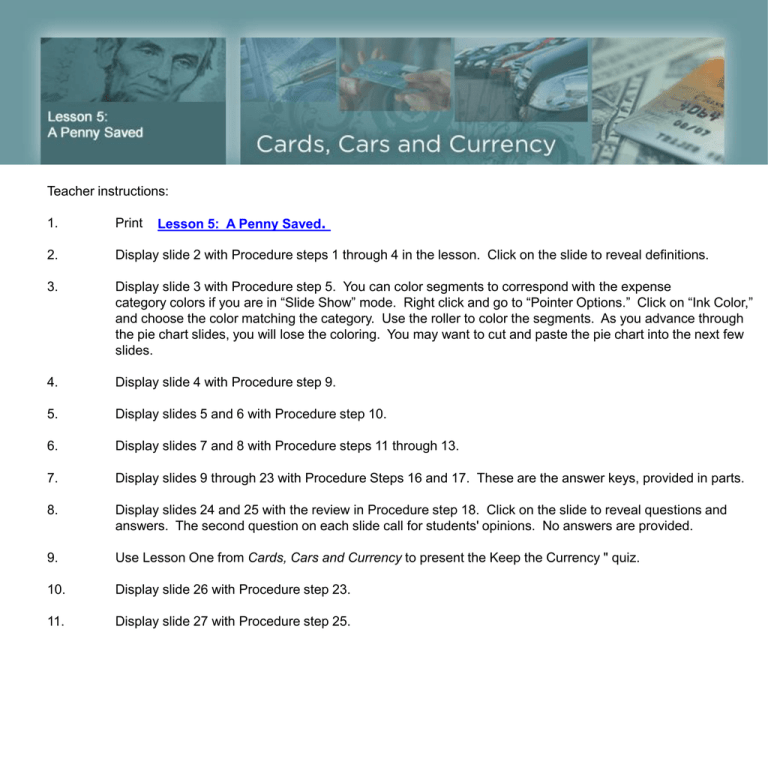
Teacher instructions: Lesson 5: A Penny Saved. 1. Print 2. Display slide 2 with Procedure steps 1 through 4 in the lesson. Click on the slide to reveal definitions. 3. Display slide 3 with Procedure step 5. You can color segments to correspond with the expense category colors if you are in “Slide Show” mode. Right click and go to “Pointer Options.” Click on “Ink Color,” and choose the color matching the category. Use the roller to color the segments. As you advance through the pie chart slides, you will lose the coloring. You may want to cut and paste the pie chart into the next few slides. 4. Display slide 4 with Procedure step 9. 5. Display slides 5 and 6 with Procedure step 10. 6. Display slides 7 and 8 with Procedure steps 11 through 13. 7. Display slides 9 through 23 with Procedure Steps 16 and 17. These are the answer keys, provided in parts. 8. Display slides 24 and 25 with the review in Procedure step 18. Click on the slide to reveal questions and answers. The second question on each slide call for students' opinions. No answers are provided. 9. Use Lesson One from Cards, Cars and Currency to present the Keep the Currency " quiz. 10. Display slide 26 with Procedure step 23. 11. Display slide 27 with Procedure step 25. Payday Decisions Gross pay - The amount earned per pay period before any deductions or taxes are subtracted. Net pay - The amount received after all deductions have been subtracted from a paycheck; also called take-home pay. Disposable income - The amount of money a person has available to save or spend. Disposable income - The amount of money a person has available to save or spend. car payment and expenses food utilities clothing rent misc. expenses Saving is income not spent on current consumption or taxes. Saving involves giving up some current consumption for future consumption. A rule of thumb for young adults is to save 10 percent of their disposable income. How many sections of the circle represent 10 percent of your disposable income? What would you give up today in order to save for future purchases? Figure it Out Michelle, Juan, Sasha and Bob each have $2,500 in net pay each month. They have each analyzed the amount of late fees, overdraft fees and over-the-credit-limit fees they have been charged for the current month, as listed in the chart. Complete the last two columns of the chart. If Michelle, Juan, Sasha and Bob each continue to pay the same amount of late fees, overdraft fees and over-the-credit-limit fees each month as given in Chart A above, how much will they each pay for an entire year? Calculate the total amount of fees they will pay for an entire year and the effects on their annual disposable income. Fill in the amounts on Chart B below. Review What is the difference between gross and net pay? Gross pay is the amount earned per pay period before any deductions or taxes are subtracted. Net pay is the amount received after all deductions and taxes have been subtracted from a paycheck. Have your financial knowledge and skills improved as a result of the Cards, Cars and Currency lessons? Review Why is financial literacy important? Having and applying financial knowledge enables people to "hold on" to more of their hard-earned income. Do you think that if you played another round of "Keep the Currency" right now, you would keep more currency than you did the first time that you played? Quotations from Yesteryear "If you would be wealthy, think of saving as well as getting." "A penny saved is a penny earned." Benjamin Franklin (1706-1790) A Current Quotation "I am personally convinced that improving education is vital to the future of our economy and that promoting financial literacy in particular must be a high priority." Ben Bernanke Chairman of the Federal Reserve System

